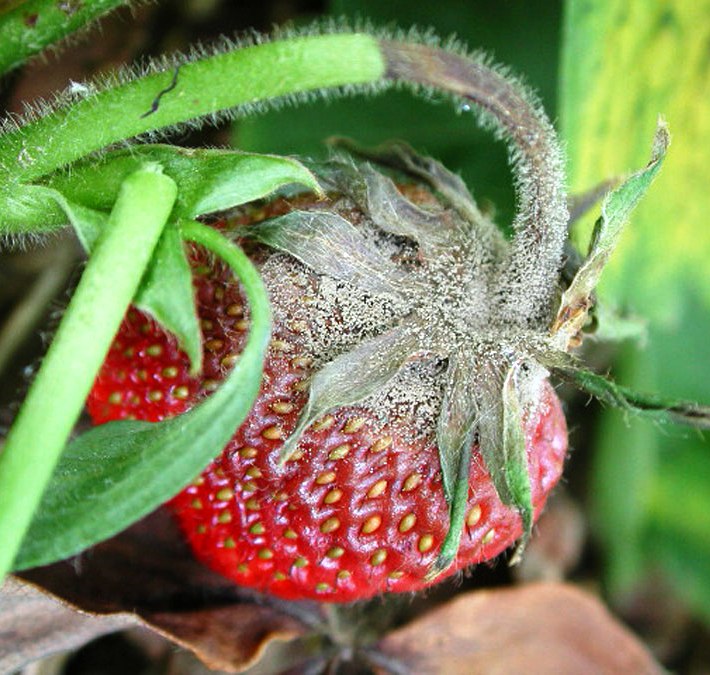
Insects and Diseases Common to Local Gardens
Share
by Ken Lain, the mountain gardener
Although gardening has so many upsides, it does have one really irritating double-barreled downside: pests and diseases that attack our beautiful plants and delicious homegrown vegetables. These attacks rarely are fatal, but monitoring a garden regularly can alert us to a problem early enough to prevent major damage and literally nip it in the bud.
Aphids have infested this scabiosa plant. Watters created an organic spray called Home Harvest, that not only kills this early spring pest but also repels aphids from flying back into the garden.
Cabbage worm damage can be detected by holes in a cabbage plant's leaves. Hand remove adult worms and look for eggs on the undersides of the leaves. An organic caterpillar spray that can be sprayed up to the day of harvest is Bonide's Captain Jack's Deadbug Brew, sold here at Watters.
Spider mites can cause tomato plants' leaves to dry out and the plant to die. This Tomato plant suffered a severe spider mite infestation. Spraying with Watters Multi Purpose Insect Spray is the best control.
Squash bug eggs hatch into nymphs on the undersides of leaves. Remove any affected leaves and scout for adults. Here is a great video showing how to handle this pest.
Tomato hornworm is the larval stage of the five-spotted hummingbird moth. Both stages of this insect are formidable sights, but the hornworm is a most unwelcome sight in a vegetable garden. Hornworms favor the leaves of tomato and pepper plants, and since the hornworms blend in so well with the foliage, you might not notice them until you start to see damage. Because hornworms grow up to 5 inches long, the easiest way to get rid of them is to simply remove them from the plant and dispose of them. Here's a YouTube of the actual critter on my own tomatoes.
Silverleaf whitefly feeds off plants by sucking the plants' juices. This can cause wilting, stunting, and eventual plant death. As with their relatives the aphids, mealybugs, and scale, a whitefly population can grow out of control quickly. The best way to control whiteflies is to monitor plants constantly and use a combination of techniques to keep down their populations. Check to be sure any new plant you buy is not infested; just moving the plant will cause them to flutter around, making them easy to spot. If you discover a small infestation in your garden, wash it off with a blast of water from the hose or by sinking the plant into a bucket of water. Sprays containing pyrethrum or neem oil offer some control to existing whitefly infestations. Coat both the upper and lower surfaces of leaves with the spray. Repeat applications likely will needed.
Wireworms are very common in all types of soil, their damage found year-round. If wireworms feed on the roots of plants, the plants will grow slowly and be weak. Since wireworms are so common, they are extremely hard to control. However, if you suspect wireworms are present, here are a few techniques you can try to limit their destructiveness:
 soon as possible to limit the spread of this virus.
Botrytis, or gray mold, is a fungus that frequently affects peony plants. Remove and destroy any affected leaves. Give the plants plenty of space for air flow. Cut back and remove foliage in the fall to lessen overwintering spores.
Powdery mildew often shows up as the summer monsoon rains begin. A white powder coats and suffocates the plants' leaves, eventually leading to death. Water during early
soon as possible to limit the spread of this virus.
Botrytis, or gray mold, is a fungus that frequently affects peony plants. Remove and destroy any affected leaves. Give the plants plenty of space for air flow. Cut back and remove foliage in the fall to lessen overwintering spores.
Powdery mildew often shows up as the summer monsoon rains begin. A white powder coats and suffocates the plants' leaves, eventually leading to death. Water during early morning to make sure your garden is dry through the evening. If you see white forming on any of your plants, spray with an organic “Copper Fungicide” available here at Watters Garden Center.
Leaf Spot looks like a plant's leaves are spotted or have burned edges. Remove affected
morning to make sure your garden is dry through the evening. If you see white forming on any of your plants, spray with an organic “Copper Fungicide” available here at Watters Garden Center.
Leaf Spot looks like a plant's leaves are spotted or have burned edges. Remove affected  leaves and spray the remaining leaves with “Copper Fungicide” to prevent further spotting.
The Watters team is expert on insects and plant diseases. If you need more help, just ask.
~ * ~
Earth Day celebrations will be held April 22 on Prescott's courthouse square.
leaves and spray the remaining leaves with “Copper Fungicide” to prevent further spotting.
The Watters team is expert on insects and plant diseases. If you need more help, just ask.
~ * ~
Earth Day celebrations will be held April 22 on Prescott's courthouse square.
- Introduce beneficial Nematodes into your garden soil to eliminate and control this pest organically.
- Cultivate your soil in May and June, when the worms hatch, to expose them to hungry birds.
- Use chunks of potato as a decoy trap. Skewer a piece of raw potato and bury it near the problem area. After about a week dig it up and check for the presence of wireworms. Dispose of the potato piece, wireworms and all.
- After harvesting remove and destroy infected crops to limit overwintering.
 soon as possible to limit the spread of this virus.
Botrytis, or gray mold, is a fungus that frequently affects peony plants. Remove and destroy any affected leaves. Give the plants plenty of space for air flow. Cut back and remove foliage in the fall to lessen overwintering spores.
Powdery mildew often shows up as the summer monsoon rains begin. A white powder coats and suffocates the plants' leaves, eventually leading to death. Water during early
soon as possible to limit the spread of this virus.
Botrytis, or gray mold, is a fungus that frequently affects peony plants. Remove and destroy any affected leaves. Give the plants plenty of space for air flow. Cut back and remove foliage in the fall to lessen overwintering spores.
Powdery mildew often shows up as the summer monsoon rains begin. A white powder coats and suffocates the plants' leaves, eventually leading to death. Water during early morning to make sure your garden is dry through the evening. If you see white forming on any of your plants, spray with an organic “Copper Fungicide” available here at Watters Garden Center.
Leaf Spot looks like a plant's leaves are spotted or have burned edges. Remove affected
morning to make sure your garden is dry through the evening. If you see white forming on any of your plants, spray with an organic “Copper Fungicide” available here at Watters Garden Center.
Leaf Spot looks like a plant's leaves are spotted or have burned edges. Remove affected  leaves and spray the remaining leaves with “Copper Fungicide” to prevent further spotting.
The Watters team is expert on insects and plant diseases. If you need more help, just ask.
~ * ~
Earth Day celebrations will be held April 22 on Prescott's courthouse square.
leaves and spray the remaining leaves with “Copper Fungicide” to prevent further spotting.
The Watters team is expert on insects and plant diseases. If you need more help, just ask.
~ * ~
Earth Day celebrations will be held April 22 on Prescott's courthouse square.
